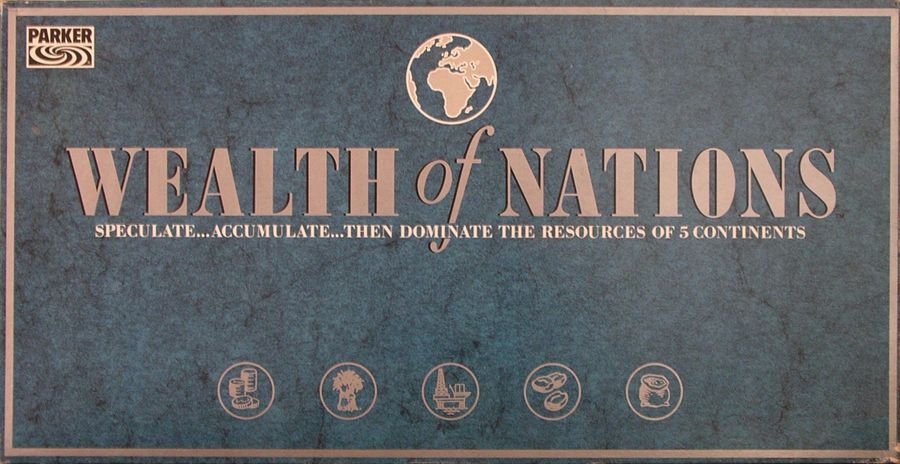Wealth of Nations (1975) Board Game
Wealth of Nations is a board game released in 1975 that focuses on economic principles and strategy. Designed by Christian Pachis, this game challenges players to build and manage their own economy while competing against others in a quest for wealth and power.
Game Components of Wealth of Nations
How To Setup Wealth of Nations
Setting up the game involves distributing the industry and commodity packages among players in a snake order. Each player chooses either an industry or commodity package until all are taken. The market boards are set up to display prices, and the supply of cubes and tiles is organized. The game starts with a trade phase where players buy, sell, or barter resources.
Gameplay Mechanics and Game Objective
– Resource Management: Players manage cubes and tiles to produce and trade goods.
– Trading: Players engage in a market-based trading system to buy, sell, and barter resources.
– Factory Building: Players build and expand industries to increase efficiency and production.
– Economic Cycles: The game simulates economic cycles, requiring players to manage cash flow and capitalize on market opportunities.
– Interdependence: Players must balance their own production with the needs of other players to maintain a sustainable income.
Player Experience
The game is praised for its realistic representation of classical economic theories, including supply and demand, division of labor, and business cycles. However, it is criticized for its lengthy gameplay and lack of exciting, tense decision-making. Players must navigate a complex economic system, relying on their rivals for trade, which can become repetitive and slow-paced.
Pros
Cons
Personal Thoughts on Wealth of Nations
This game is ideal for economic enthusiasts and those who appreciate complex, strategic gameplay. It is not recommended for players seeking fast-paced or highly interactive games. Despite its strengths in teaching economic principles, the game’s length and component quality may deter some players. If you don’t mind a long, heavy economic game and are interested in classical economic theories, **Wealth of Nations** could be a great addition to your board game collection.
We are supported by our audience. When you purchase through links on our site, we may earn an affiliate commission, at no extra cost for you. Learn more.

